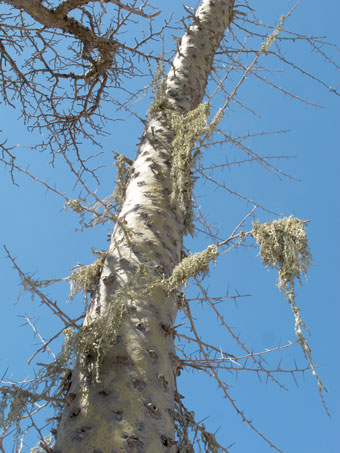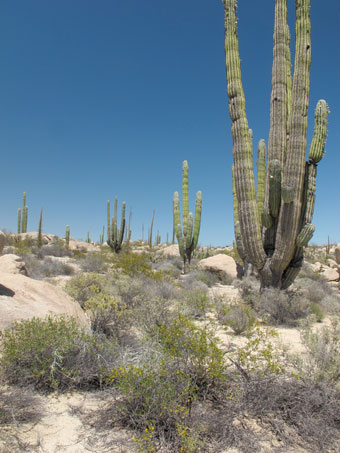This section contains entries about our botanizing in Baja California written for the UC BEE (Oct 2012 to Aug 2021)
and The UC Bee Hive (2022-), monthly newsletters for volunteers and staff of the UC Berkeley Botanical Garden.
Click on any photo for a larger image.
BEE JULY 2015
The Return Trip North
I'm always torn about having to return to California. On the one hand, the weather is warming up and the humidity quickly begins to get uncomfortable for us in Mulegé. But, it's also the time when the desert is starting to ramp up into spring blooming and there's much to see. If we didn't have obligations in the north, I would have loved to have slowed down our return trip to spend a few more days exploring each of a number of spots along the way. Here's a little of what we saw on the way back to the border.
Mulegé to Guerrero Negro, BCS — April 23, 2015
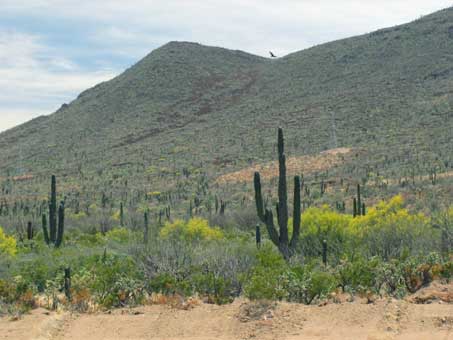
The flowering wave has reached northward beyond Santa Rosalía.
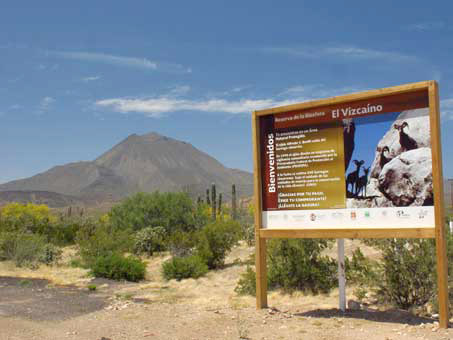
The volcano lies within the Vizcaíno Biosphere Reserve and is home to a herd of endangered, endemic Big Horn Sheep & a geothermal plant.
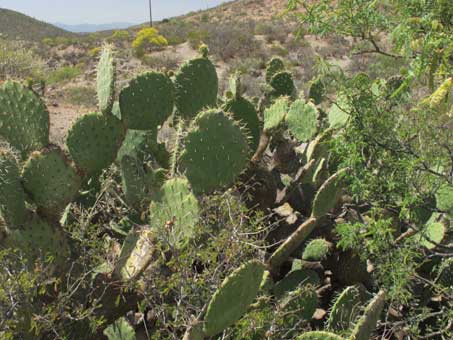
The Nopal / Prickly pears (Opuntia sp., Cactaceae) nearby were also starting to bloom.
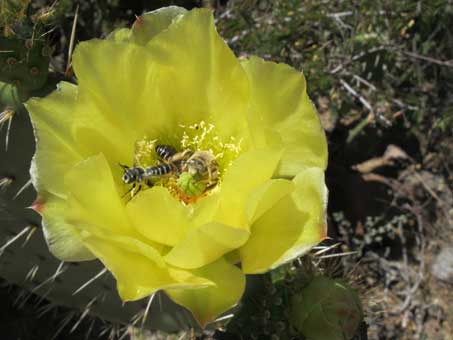
The Nopal flowers were full of insects. This one had at least 3 native bees (left side), as well as a very hairy species (perched on the stigmas) and a bunch of tiny beetles deep down inside.
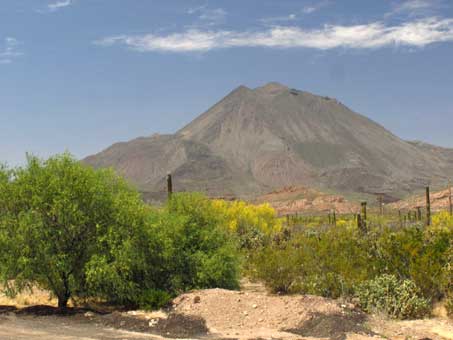
El Volcán de las Tres Vírgenes in the distance.
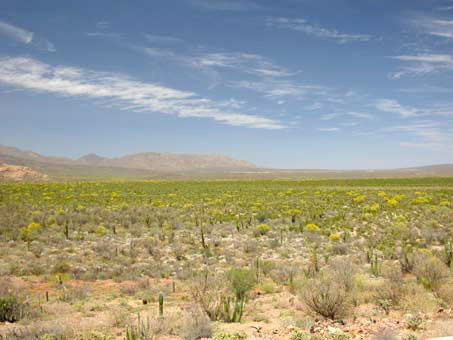
The basin at the foot of the volcano was ablaze with Palo Verde and Dipúa (Parkinsonia spp.) in bloom.
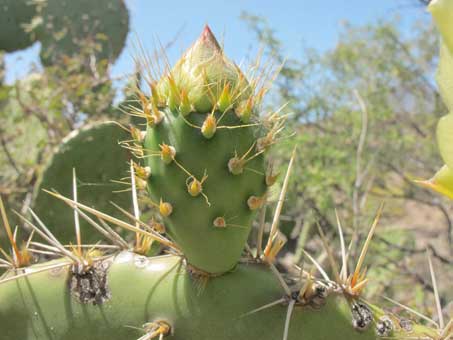
Nopal flower bud and the fleshy inferior ovary (soon to be fruit) beneath. Note the conical, ephemeral leaves hidden in the spines.
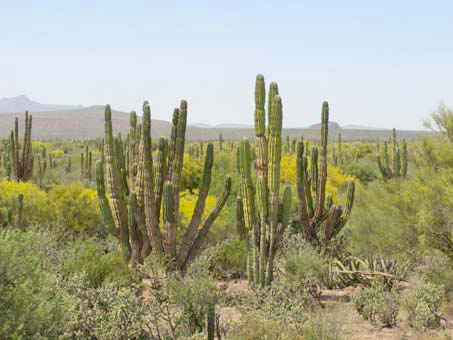
Around San Ignacio, the vegetation of the bajadas and arroyo beds became very green, with splotches of Palo Verde and Dipúa in bloom.
After San Ignacio, as the highway moves out of the foothills and onto the Vizcaíno Plain (which is adjacent to the Pacific and composed of ancient sea beds topped with patches of low sand dunes), the vegetation changes quite dramatically from desert scrub to a low halophytic (salt loving) scrub.
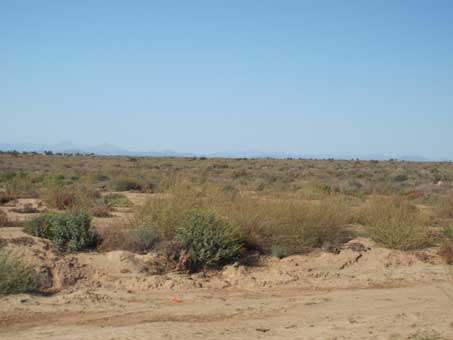
The dunes may look like this, with lots of low, rounded shrubs. The dominant species include Frankenia palmeri, Suaeda nigra, Atriplex julacea, A. canescens var. linearis, Lycium brevipes, Bahiopsis microphylla, Encelia palmeri, and E. ventorum.
Siempreviva or Live Forever (Dudleya acuminata, Crassulaceae) add the occasional bit of color when in bloom, usually poking up out of other shrubs.
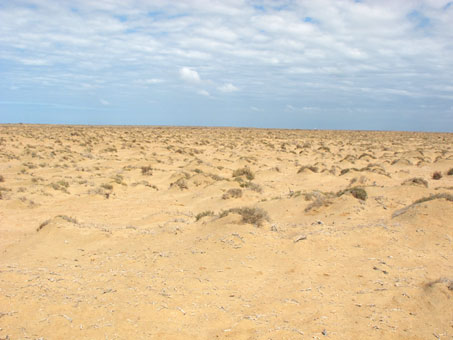
Or they may look like this seemingly denuded area. The same species are found here but just in much lower coverage and sizes. The dominant shrubs here are Frankenia palmeri and Atriplex julacea; the others are more dispersed. These images are about 30 km apart.
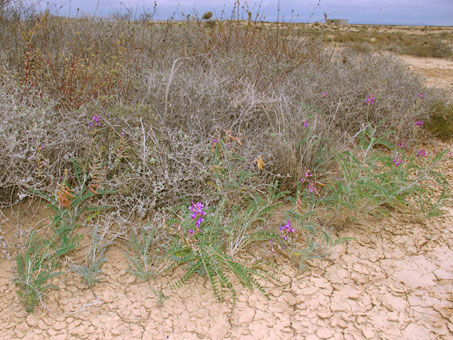
A surprising splash of color in an otherwise almost totally brown and gray landscape. The endemic locoweed Astragalus magdalenae (Fabaceae) growing on the leeward side of a small hummock of densely packed plants.
Central Desert Region (Guerrero Negro to San Quintín, BCN) — 27 de abril
As we headed northward again a few days later, the desert was exceptionally colorful. What had started out looking like it might be an ugly, windy trip quickly changed for the better with a clear sky and excellent visibility.
You can read more and see additional images from a previous trip at another of my pages here: Central Baja Desert.
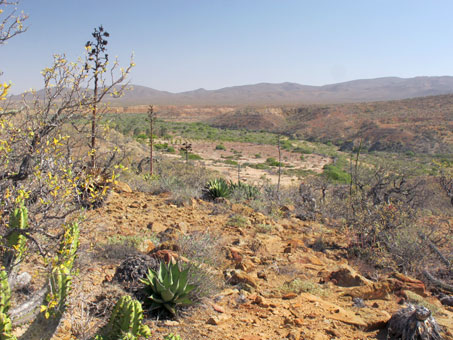
Coastal desert scrub near El Tomatal, BC.
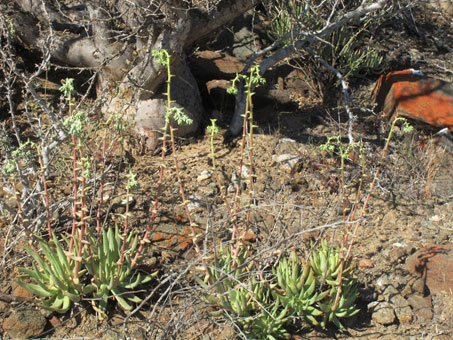
Siemprevivas / Live Forevers or Dudleyas are abundant in the coastal scrub (White-flower dudleya, Dudleya albiflora, Crassulaceae).
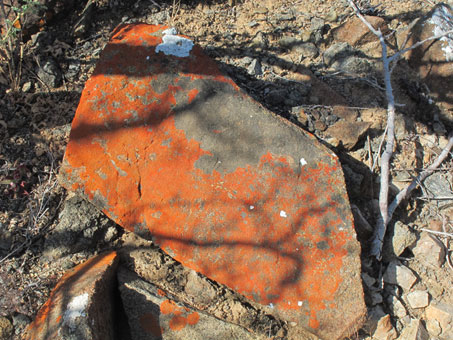
Brick red lichen growing on a large volcanic rock. Tentative ID: Caloplaca saxicola. Red Firedot Lichen.
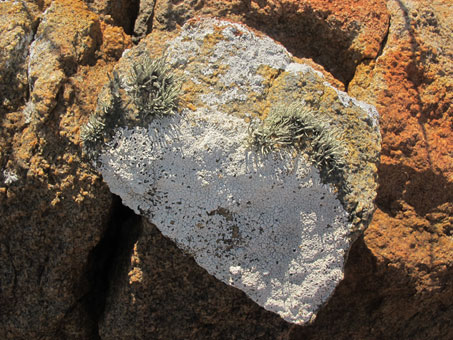
Painted rocks. There are what appears to be at least 3 species of lichens (from what I can tell at max. zoom) on rocks that are already multicolored volcanics.
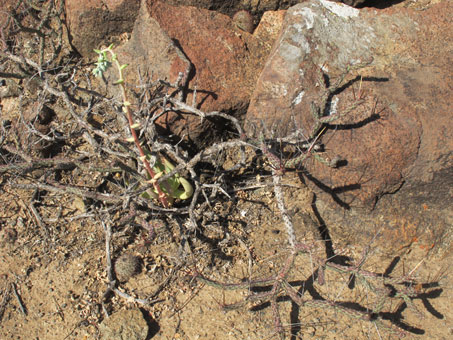
Lindsay Cholla / Cholla (Cylindropuntia lindsayi, Cactaceae) is a peninsular endemic and found from Punta Prieta (BC) to the Cape (BCS).
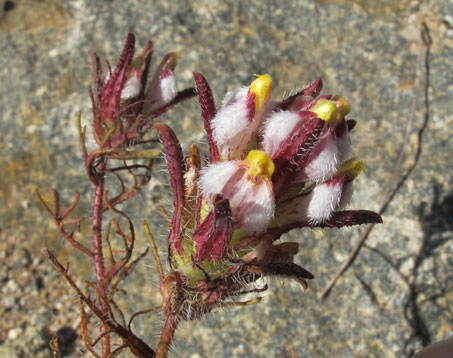
Orcutt's Bird's-Beak (Dicranostegia orcuttiana, Orobanchaceae). I've only ever seen this native annual plant twice, and both times it's been in this vicinity near El Tomatal.
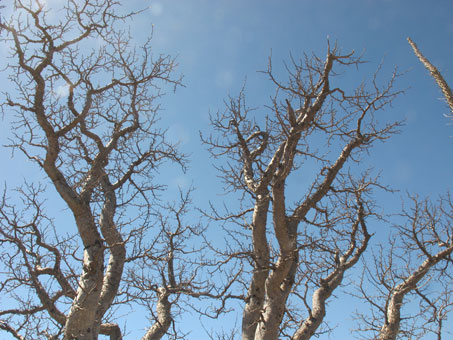
Bare branches of Copalquín (Pachycormus discolor var. pubescens). At this latitude the trees were putting on a new set of leaves while farther north some were blushing with dark pink flowers.
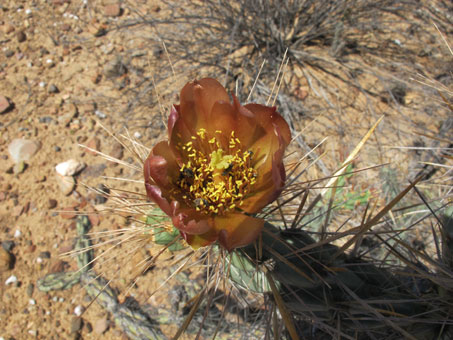
Clavellina / Long-spine Cholla (Cylindropuntia molesta). Another cactus flower full of insects, this one with 10 or more small black beetles and/or bugs.
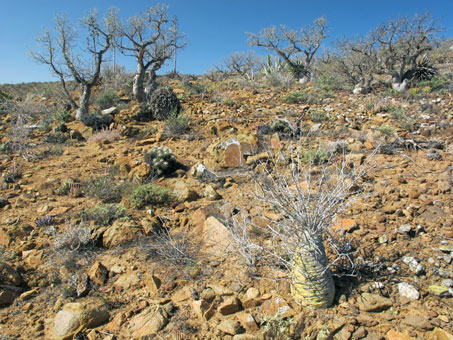
Baby Cirio / Boojum Tree (Fouquieria columnaris) in the foreground. Five small Copalquín / Elephant Trees in the background.
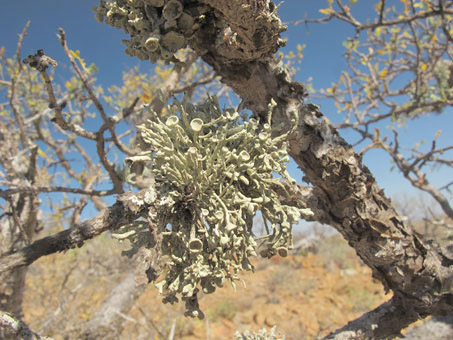
So are lichens that are fed by coastal fog. They grow on everything (rocks, soil & bark). Probably Niebla ceruchis, Bark Fog LIchen.
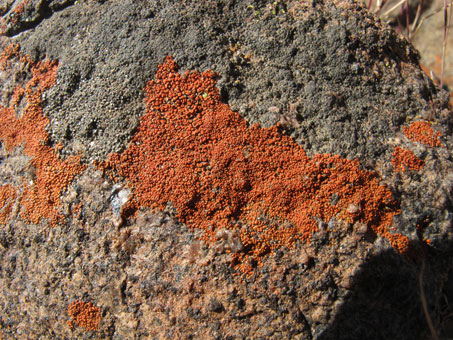
Closeup of the red lichen. Perhaps Caloplaca saxicola. Red Firedot Lichen.
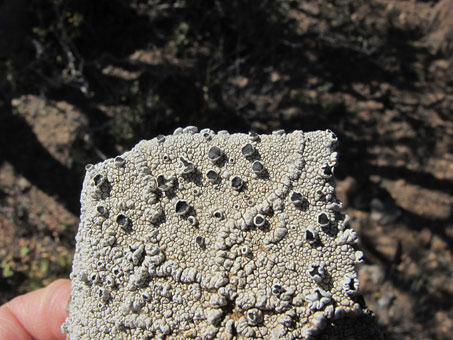
Possibly Black-eye Lichen, Tephromela atra. Not sure if it's the same as the white lichen in the photo on the left.
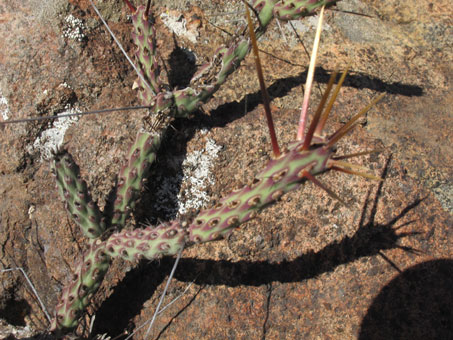
Lindsay cholla (Cylindropuntia lindsayi, Cactaceae). Stems are about the diameter of a finger.

There were a number of plants, each about 30 cm W, at the edge of the road. So cute! The species is listed by CNPS as "Rare, threatened, or endangered in CA, but more common elsewhere."
The fruticose Orchilla / Lace Lichen (Ramalina menziesii) hanging on a Cirio (Fouquieriaceae columnaris, Fouquieriaceae).
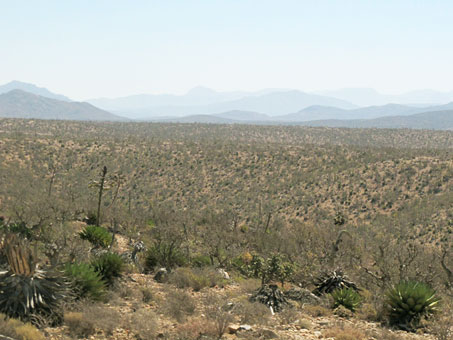
View of scrub in the Valle de los Cirios Natural Protected Area. I love the layers of mountains in the distance.
I was utterly taken by the color variation of the desert along this stretch and couldn't stop taking photos. Below are just a few of these varied scenes.

Between Punta Prieta and Cataviña, there were signs of Copalquín / Baja California Elephant Tree starting to bloom (Pachycormus discolor var. pubescens, Anacardiaceae). The spiny "sticks" in the foreground are Ocotillo branches with new inflorescences.
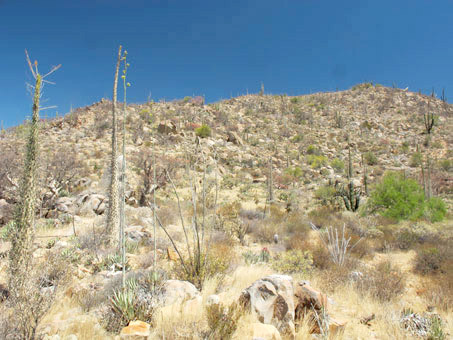
East side of the highway. Some hillsides were carpeted with golden summer-winter annual grasses while Agaves, Ocotillos and Elephant trees were busy putting out new leaves and flowers.
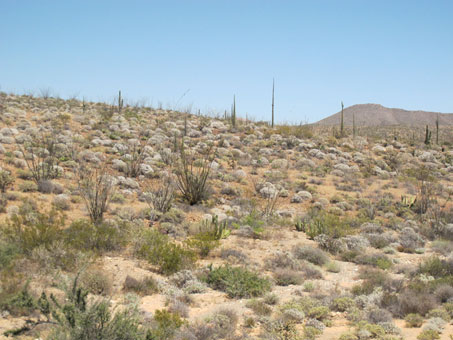
Here still near Cataviña, the Ocotillo (Fouquieria splendens, Fouquieriaceae) were just starting to bloom. The Inciensos / Brittle Bush (Encelia farinosa, Asteraceae) added great texture to the slopes (the small, light round mounds).
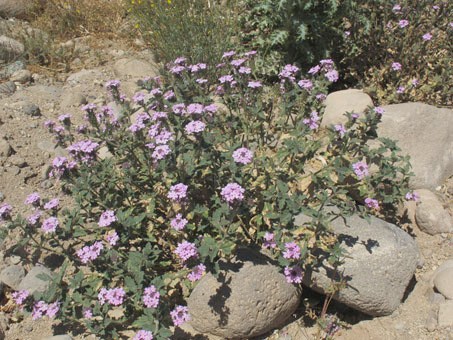
Just before Cerro Pedregoso, these beauties flashed by from the edge of a wash and I had to stop the car and walk back to check them out.
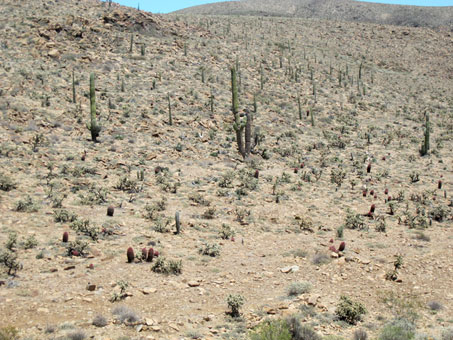
This photo of a dry, rocky, sparsely vegetated hillside was taken one minute and about one kilometer (3/4 mi) from the photo to the right.
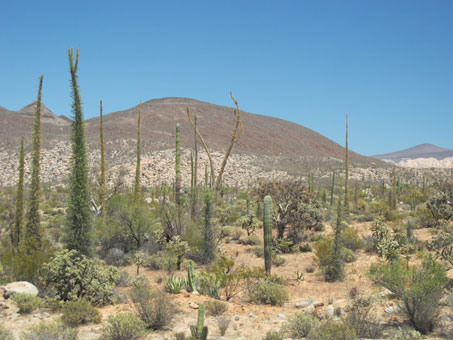
Approaching Cataviña, near Rancho Santa Inés. This is one of my favorite spots to explore whenever we camp here. Look at all the leaves on those Cirios (conical plants on left).
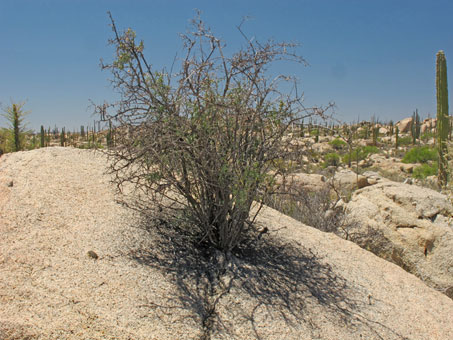
Crossosoma bigelovii (Crossosomataceae) is appropriately named Ragged Rockflower. Here, the 1 m tall shrub is growing out of a crack in this large granite boulder near Cataviña. I first came across this particular plant last May.
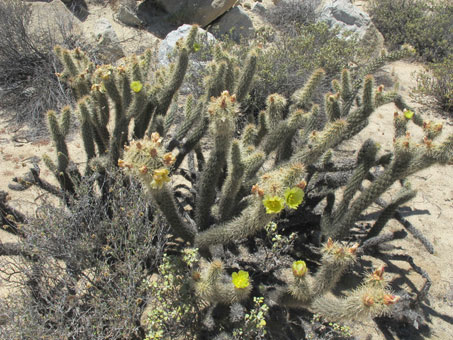
The endemic variety of Gander´s Cholla (Cylindropuntia ganderi var. catavinensis) in the Cataviña boulder fields.
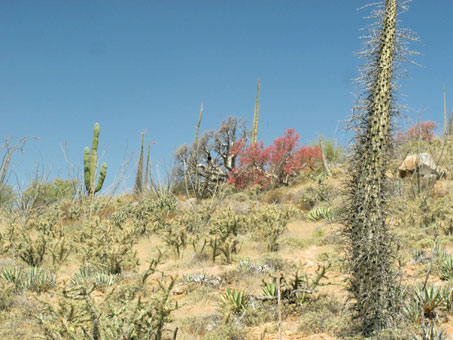
The small tree with dark pink flowers is Copalquín or Baja California Elephant Tree. This species has whitish bark that peels to expose the yellowish-green layers beneath. It is very common in the central peninsula's deserts.
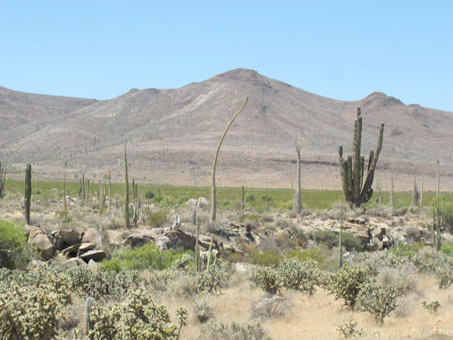
West side of the highway, same place. The view was quite different, with the valley floor (and dry watercourse) a dense, green swath of vegetation standing out against the background hills.
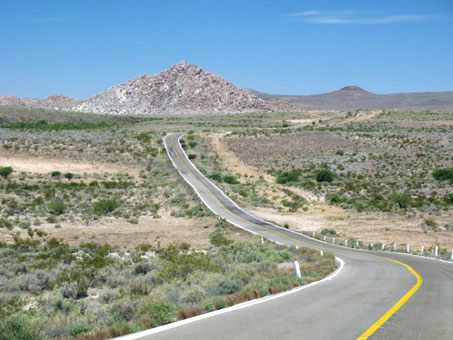
I love this rollercoaster view of the Baja Highway, with Cerro Pedregoso (Rocky Hill) in the distance. Up close, it looks as if a giant tossed a whole lot of boulders into a very tall, neat pile.
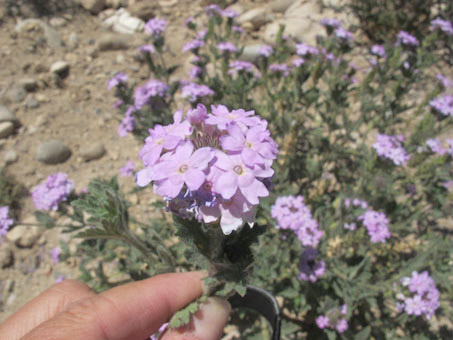
Jon Rebman at SDNHM confirmed that they were Glandularia goodingii (Southwestern Mock Vervain, Verbenaceae).
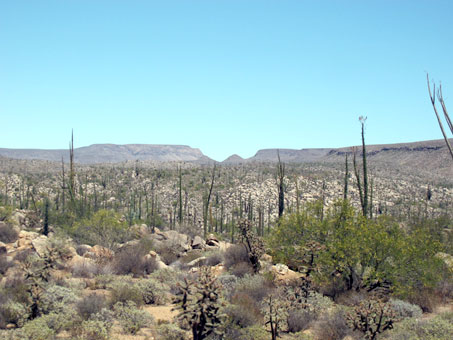
Just goes to show how quickly the terrain and vegetation can change while traveling through the central desert. Never a dull moment.
The Cardón cacti in this area are often enormous. Some were blooming but most still only had buds, unlike in Mulegé where they were in full bloom.
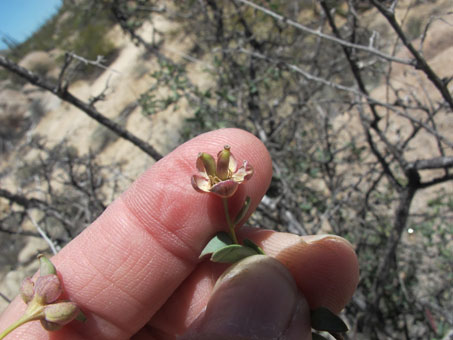
However, the flowers were all dried up and I didn´t have much to go on to help in identifying it. But this year, many had follicles present (two, in this image) and/or a few drying petals to aid in the identification as Crossosoma bigelovii.
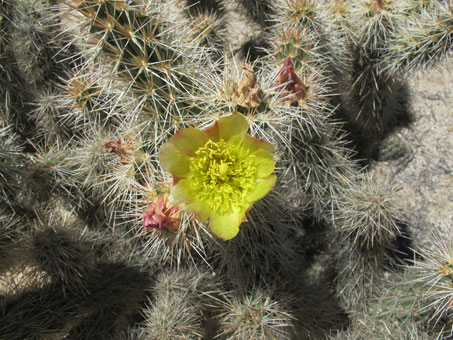
Flowers of Cylindropuntia ganderi var. catavinensis
Just north of El Rosario, the highway returns to the Pacific coast and the Coastal scrub. For many kilometers the highway passes through and by ancient marine terraces. Unfortunately much of this special habitat ( Coastal Rosette Scrub) is being threatened by development. I have previously written about this in my January 2015 entry.
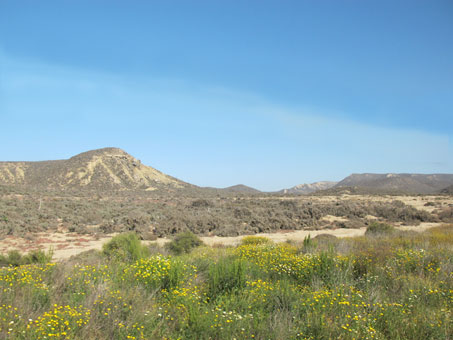
Some disturbed areas of the Coastal Rosette Scrub were springing out, mostly composite species at the edge of the highway.
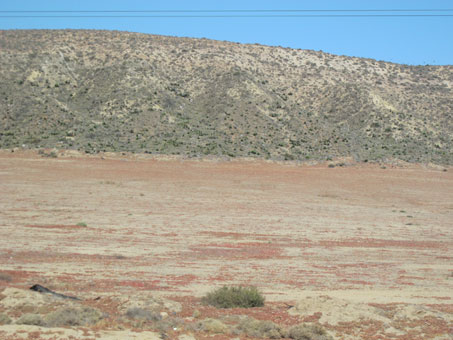
Land that has been razed for development projects that have as yet to materialize. The rusty red ground cover is Hielitos / Crystalline Iceplant, a non-native from Africa that has naturalized here.
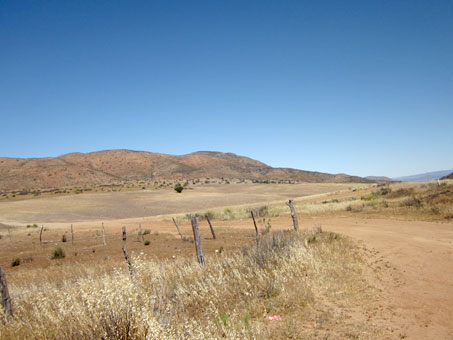
Golden hills in the agricultural belt south of San Vicente, BC.
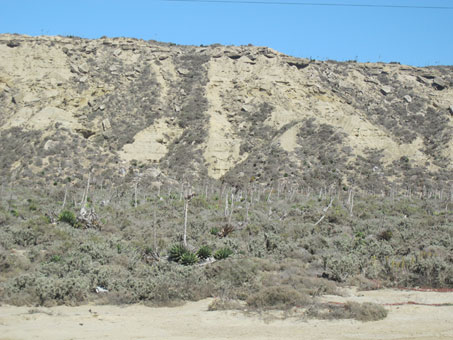
A fairly intact section of this type of scrub beyond the disturbed area of the highway edge. Lots of Coastal Agave (Agave shawii), Cliff Spurge (Euphorbia misera), Lycium sp.
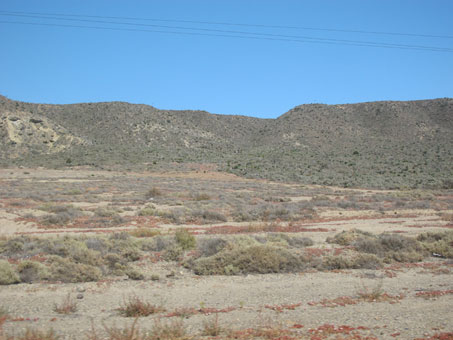
Area razed a number of years ago. Some species such as Sea Blite (Suaeda nigra), Saltbush (Atriplex spp.), and Crystalline Iceplant (Mesembryanthemum crystallinum, Aiozaceae) are recolonizing.
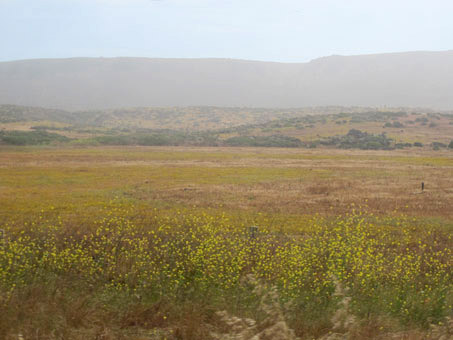
On our last day in Mexico, heading north from Ensenada along the coast, we drove into a low, thick fog bank. The image is a little fuzzy due to car speed and the dissipating fog, but the fields were certainly colorful.
That´s it for this season's adventures in Baja California. If you´re interested, there´s still lots to explore about the peninsula's natural wonders on my site. Get a start on this page for natural history or here for more plants.
Debra Valov—Curatorial volunteer




























